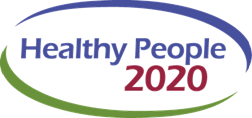Written by Janet Fulton, Centers for Disease Control and Prevention
How were the physical activity objectives developed?
The Centers for Disease Control and Prevention in partnership with the President’s Council on Fitness, Sports and Nutrition worked with a team of federal agency representatives to formulate the objectives for the physical activity topic area. The availability of recent and ongoing nationally-representative data were a necessary requirement for inclusion of an objective; public comments provided further guidance for the final objectives. The Healthy People 2020 default method (10% relative beneficial change) was most commonly used to set the target for each objective.
What’s new for Healthy People 2020?
The 2008 Physic al Activity Guidelines for Americans provided an evidence-based framework by which the Healthy People 2020 physical activity behavioral objectives were revised. For adults and youth, objectives PA-2 and PA-3 are now consistent with the Guidelines. Because aerobic and muscle-strengthening activities are BOTH required to fully meet the Guidelines, sub-objectives for youth and adults that combine aerobic and muscle-strenghtening activities are now included.
al Activity Guidelines for Americans provided an evidence-based framework by which the Healthy People 2020 physical activity behavioral objectives were revised. For adults and youth, objectives PA-2 and PA-3 are now consistent with the Guidelines. Because aerobic and muscle-strengthening activities are BOTH required to fully meet the Guidelines, sub-objectives for youth and adults that combine aerobic and muscle-strenghtening activities are now included.
School-based physical activity is reflected in modified objectives for physical education (PA-4 and PA-5) and in two new objectives for elementary school recess (PA-6 and PA-7). More than 60% of pre-school
children attend child care. Therefore, enacting policies that require physical activity in the child care setting (PA-9) is a strategy to modify the physical activity environment for children. Given the ubiquitous role screen time plays in society, the modified objective for youth to reduce screen time through telelvision viewing and computer use (PA-8) is an increasingly important goal.
A new objective for Healthy People 2020 (PA-11) will monitor physician counseling about exercise. Given the recent emphasis on physician counseling about physical activity by the American College of Sports Medicine’s Exercise is Medicine program, it is timely that physical activity guidance in the health care setting is tracked at the national level.
Where do we go from here?
With less than 20% of adults meeting the Guidelines for aerobic and muscle strengthening activities and a similarly low percentage of youth meeting the Guidelines for aerobic physical activities, a multidisciplinary approach is needed to facilitate improvements in recommended levels of physical activity.
The importance of having reliable, nationally-representative data sources to track the metrics associated with physical activity cannot be overstated. Important and novel topics were discussed by the Work Group, only to learn that a suitable data source was unavailable. For example, improving the environment for physical activity is a recommended strategy, although there is no acceptable national data source that tracks individual access to green spaces or parks. The same is true for physical activity in the work place. It is imperative to continue support of current Healthy People 2020 data sources and to support future collection of strategic priority topic areas for physical activity promotion.
It is our hope that as these Healthy People objectives disseminate across states and into the schools, businesses, and organizations that make up our communities, there will be an interest in working across sectors to affect real change in physical activity behaviors. The National Physical Activity Plan provides an excellent multi-sectoral framework along with strategies and specific tactics for action. Time and again the health benefits of physical activity have been well documented. Let’s work together to move the dial on physical activity this decade!